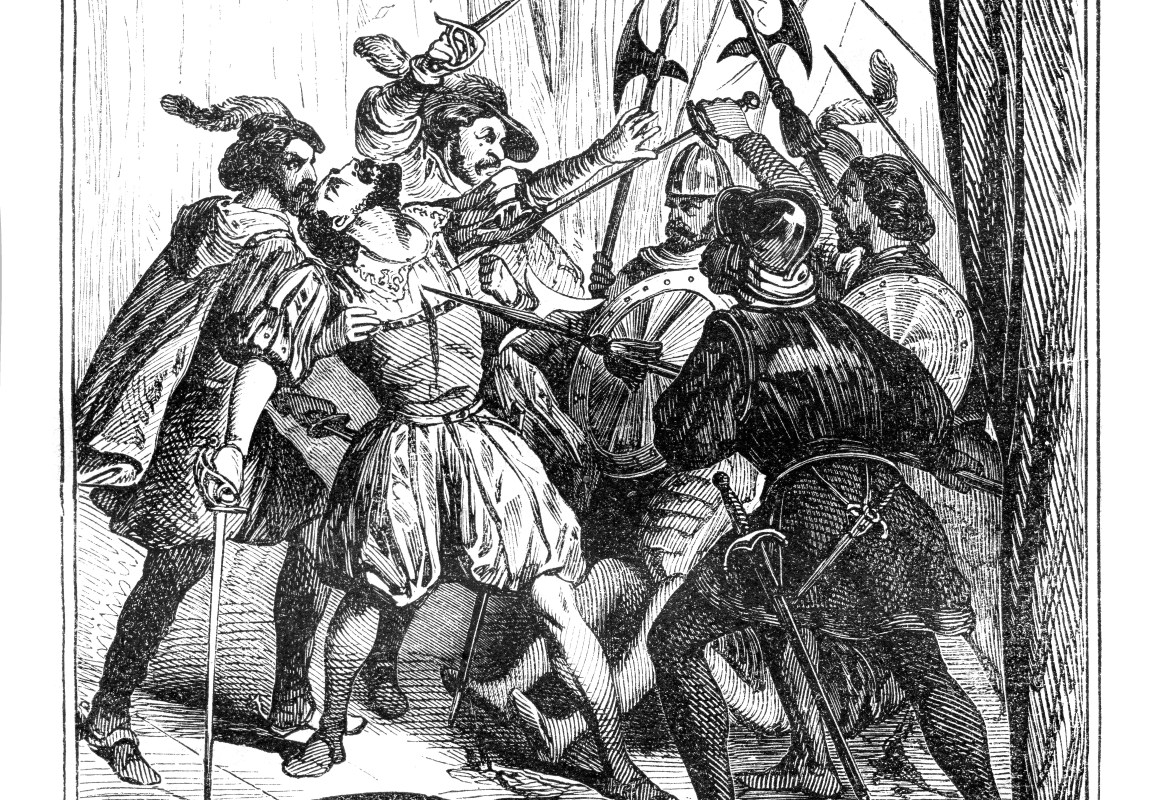The so-called assassins weren’t trying to be stealthy. They were yelling on the street as they approached the elegant Peruvian estate. They were there, they said, to kill Francisco Pizarro.
It was 447 years ago this week in Lima that the bloodthirsty group, known as the men of Chile, intended to end the life of the infamous Spanish explorer who through violence, intimidation and underhanded trickery had conquered the Incas eight years before.
The assassins were hardly avenging the native peoples, however. Rather, they too were conquistadors, but ones who had not been allowed to share in the wealth stolen from the Incas and whose leader had been executed by Pizarro’s older brother, according to histories cited in a 1989 study of Pizarro’s death.
The story goes that the murder was originally supposed to take place as Pizarro, who by then had been named the governor of Peru at 63, returned to his home from mass. But one of the men among the band of would-be killers confessed the upcoming crime to a priest, who in turn warned Pizarro.
So instead on June 26, 1541, Pizarro skipped mass and instead gathered guests for lunch.
“The plotters must have suspected the plot had been discovered, so they took immediate action,” the 1989 study says.
While Pizarro and his guests ate, a group of between eight and 20 men “brandishing battle axes, swords, lances and crossbows” gathered at the front of the governor’s palace and shouted for Pizarro to meet his fate. Pizarro ordered the door to the upper floor be secured and most of his guests were able to escape through the gardens in the back.
When the attackers managed to get through the front door, a few guards stood their ground and tried to fight them off. Meanwhile, Pizarro struggled to put on complex armor by himself, before eventually tossing it aside and entering the fray. But by then his guards had been seriously wounded.
Drawing from historical accounts cited in a Peruvian scholarly journal, the study says:
“Finding himself alone after the collapse of his last protector, Pizarro taunted his enemies. Killing at least two attackers, the old warrior continued to fight, but when in a third unsuccessful assassin was shoved against his sword, Pizarro was unable to clear his blade and received a wound in the throat. He fell to the floor while several of the conspirators thrust their rapiers into him. He was dispatched while on the floor” the study says.
The dramatic story was able to be told not only because several of those present survived to testify against the conspirators, but centuries later scientists were able to study Pizarro’s skeletal remains and match the fight, blow-by-blow, as it had been described centuries before with wounds still visible on the bones.
It wasn’t that simple, however. Thanks to a series of earthquakes in Lima and several transfers of Pizarro’s remains, somehow the conquistador’s body became mixed up with another man’s remains.
“For almost a century, this mummy held unending fascination for both Peruvians and foreigners,” the Los Angeles Times wrote in 1985. “No tour of the country was complete without a glimpse of what the guides called ‘Pizarro’s authentic shriveled remains in a glass coffin.’” In 1977, however, a group hired to do some remodeling at the church where Pizarro was laid to rest opened a wall they weren’t meant to open.
“Beyond the wall lay a niche and a lead box with a rough inscription on the lid saying that it contained the skull of Francisco Pizarro. Next to the lead box lay a wooden crate of bones wrapped in velvet,” the report says.
There were enough bones for four people, but researchers quickly surmised they were Pizarro, and likely two of his children and perhaps a niece. Of Pizarro, there’s no question.
“The skull was the key piece. It ‘locked on’ to the male skeleton exactly right,” pathologist Uriel Garcia is quoted as saying. “The physical evidence entirely supports the historical record. You can not only see, but almost feel, the fatal sword thrust. There’s no doubt. We have Francisco Pizarro.”
The 1989 study, which examined the injuries visible on the bones, revealed that Pizarro had been wounded more than a dozen times in the fight — at least 10 stabbings, 14 cuts and one potential blunt injury to the hand.
Though at least one sword stab did penetrate his brain, the skeletal remains also support the claim that it was a blow to the throat, one that likely severed his spine and paralyzed him, that ended the fight.
“The incised wounds to the bones from the crypt were consistent with the historical account of the death of Pizarro,” the 1989 study says. “If Pizarro was felled by a wound to the throat as related in the accounts, it most likely would have come from that direction (the right front). Probably any of the throat wounds could have brought him down … After a bitter fight, many or all, of the assassins plunged their weapons into the dead, or dying man.”
After the bloody fight was over, the men who killed Pizarro reportedly said of their fallen foe, “How valiant was the Marquee.”
This article appeared in an InsideHook newsletter. Sign up for free to get more on travel, wellness, style, drinking, and culture.

























